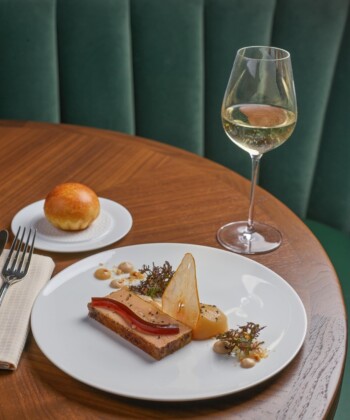There are few chefs who have the international name recognition that Yotam Ottolenghi does. In addition to being the very busy proprietor of four gourmet delis and one formal restaurant, the Israeli-born, London-based chef is a reliable presence in kitchens around the world thanks to cookbooks including Ottolenghi, Plenty and Jerusalem.
This month he’s releasing his latest, Plenty More. The book features over 150 vegetarian recipes—from appetizers to main courses and desserts—that bear Ottolenghi’s distinctive modern Middle Eastern touch. Here, the chef shares his five must-have ingredients—“presuming,” he says, “that every pantry comes with a self-stocking supply of lemons, olive oil and garlic.”
Tamarind Pulp
“Making your own tamarind paste and water from a chunk of pulp soaked in warm water before being strained is very simple and totally delicious. It doesn’t have any of the high acidity or vinegar-dominance that ready-made varieties can have. The range of things you can do with the paste is endless: dressings, sauces, marinades. Its flavor is really very special.”
Miso
“Different from tamarind but I love this for similar reasons: it’s an amazing way of packing tons of savory flavor into a dish. Whatever context miso is used in—in a soup, dressing, marinade, sauce—there is something so utterly comforting about it. I would pretty much spread it on my toast, had tahini and halva not already taken that spot.”
Iranian (or Omani) Lime
“I wish this was easier to get hold of, beyond specialty shops. You can either get the limes dried and whole—which are great for piercing and then adding to a stock, soup or stew, so that the citrus-like, sharp and aromatic flavor can be dispersed throughout. Ground Iranian lime is also a favorite which, again, is a wonderful way to let this distinct spice travel through a dish.”
Urfa Chili Flakes
“These are some of my favorite dried chilies: I love their deep burgundy color and they have a mellow flavor which adds a real warmth to a range of dishes. I often finish off dishes—be they rice, eggs, fish, meat or vegetables—with some butter melted in the pan with a pinch of urfa flakes and, possibly, some pine nuts. The color bleeds into the butter so the resulting garnish is beautiful and burgundy as well as tasting great.”
Black Garlic
“This gets my vote for ‘one to watch’ in the upcoming year. It’s a completely different product to white garlic—the raw cloves are jelly-like, rather than hard and taste mellow, rather than potent. They are a bit like a balsamic-vinegar-licorice-all-sort! You can slice up the cloves into thin slivers to mix through a salad or risotto, but my favorite thing is to blitz it up with Greek yogurt and various other flavorings to spoon over slices or roasted aubergine or as a marinade for various meats.”
Below, Ottolenghi shares a favorite recipe from his new book.
Honey-Roasted Carrots with Tahini Yogurt
The inspiration for this was Sarah’s grandmother (“nan”) Dulcie in Tasmania, who always used to add some honey to the pan before roasting her carrots. I’m not sure what Dulcie would have thought about a tahini yogurt sauce ser ved alongside, but the sweetness of the carrots certainly welcomes it. Make this extra vibrant by using different-colored carrots and ser ve alongside the Fava Bean Spread with Roasted Garlic Ricotta (page 222) and Eggplant Kuku (page 241).
Serves Four
Scant 3 tbsp/60g honey
2 tbsp olive oil
1 tbsp coriander seeds, toasted and lightly crushed
1½ tsp cumin seeds, toasted and lightly crushed
3 thyme sprigs
12 large carrots, peeled and each cut crosswise into two 2½-inch/6-cm batons (3 lb/1.3 kg)
1½ tbsp cilantro leaves, coarsely chopped
salt and black pepper
Tahini yogurt sauce
Scant 3 tbsp/40g tahini paste
2/3 cup/130g Greek yogurt
2 tbsp lemon juice
1 clove garlic
crushed salt
Preheat the oven to 425ºF/220ºC.
Place all the ingredients for the tahini sauce in a bowl with a pinch of salt. Whisk together and set aside.
Place the honey, oil, coriander and cumin seeds, and thyme in a large bowl with 1 teaspoon salt and a good grind of black pepper. Add the carrots and mix well until coated, then spread them out on a large baking sheet and roast in the oven for 40 minutes, stirring gently once or twice, until cooked through and glazed.
Transfer the carrots to a large serving platter or individual plates. Serve warm or at room temperature, with a spoonful of sauce on top, scattered with the cilantro.









































